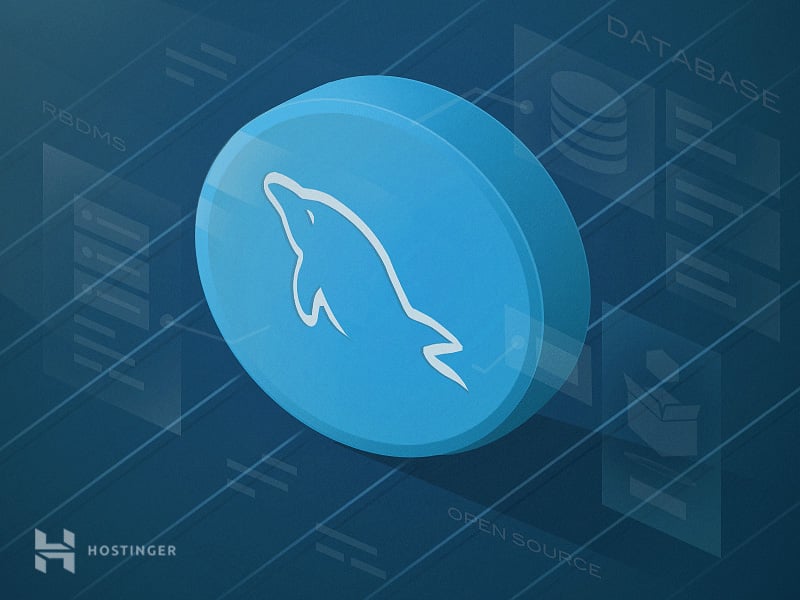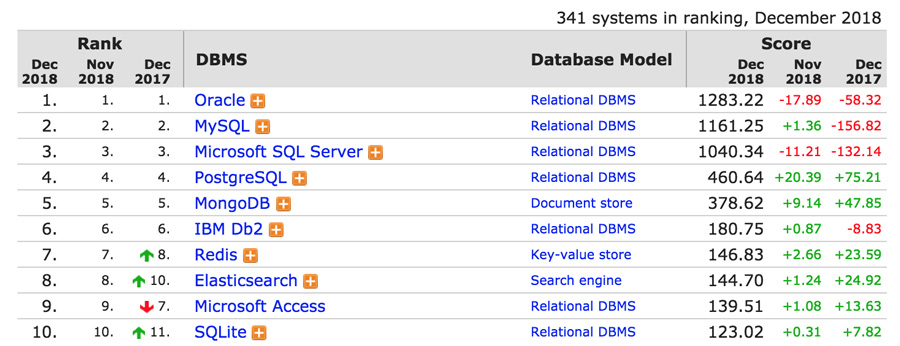What is MySQL: MySQL Explained For Beginners

Image credit : Hostinger
If you would like to find out regarding technical word additional simply, while not frustrations, you’ve come back to the proper place. we tend to build internet hosting simple, however do our greatest to clarify it in plain English too. So, what's MySQL anyway? Let’s break it down.
So what's MySQL?
First things 1st, you've got to understand the way to pronounce it: MY-ES-KYOO-EL’ [maɪˌɛsˌkjuːˈɛl]. typically folks decision it “my sequel” or alternative names, however a minimum of you recognize the official pronunciation. A Swedish company referred to as MySQL AB originally developed MySQL in 1994. The U.S.A. school company Sun Microsystems then took full possession after they bought MySQL AB in 2008. U.S.A. school big Oracle in 2010 noninheritable Sun Microsystems itself, and MySQL has been much closely-held by Oracle since.
In relevance the overall definition, MySQL is associate degree open supply electronic information service management system (RDBMS) with a client-server model. RDBMS could be a software package or service accustomed produce and manage databases supported a relative model. Now, let’s take a more in-depth explore every term:
Database
A info is solely a group of structured knowledge. think about taking a selfie: you push a button and capture a picture of yourself. Your exposure is knowledge, and your phone’s gallery is that the info. A info could be a place during which knowledge is hold on and arranged. The word “relational” implies that the info hold on within the dataset is organized as tables. each table relates in some ways that. If the software package doesn’t support the relative knowledge model, simply decision it DBMS.
Open source
Open supply implies that you’re absolve to use and modify it. Anybody will install the software package. you'll be able to additionally learn and customise the ASCII text file to higher accommodate your desires. However, The GPL (GNU Public License) determines what you'll be able to do reckoning on conditions. The commercially commissioned version is out there if you wish additional versatile possession and advanced support.
Client-server model
Computers that install and run RDBMS software package ar referred to as shoppers. Whenever they have to access knowledge, they connect with the RDBMS server. That’s the “client-server” half.
MySQL is one among several RDBMS software package choices. RDBMS and MySQL ar typically thought to be a similar owing to MySQL’s quality. some huge internet applications like Facebook, Twitter, YouTube, Google, and Yahoo! all use MySQL for knowledge storage functions. even if it absolutely was at the start created for restricted usage, it's currently compatible with several vital computing platforms like UNIX operating system, macOS, Microsoft Windows, and Ubuntu.
SQL
MySQL and SQL don't seem to be a similar. remember that MySQL is one among the foremost well-liked RDBMS software’s whole names, that implements a client-server model. So, however do the shopper associate degreed server communicate in an RDBMS environment? They use a domain-specific language – Structured command language (SQL). If you ever encounter alternative names that have SQL in them, like PostgreSQL and Microsoft SQL server, they're presumably brands that additionally use Structured command language syntax. RDBMS software package is usually written in alternative programming languages, however forever use SQL as their primary language to act with the info. MySQL itself is written in C and C++.
Computer scientist tough guy Codd developed SQL within the early Seventies with associate degree IBM primarily based relative model. It became additional wide utilized in 1974 and quickly replaced similar, then-outdated languages, ISAM and VISAM. History aside, SQL tells the server what to try and do with the info. it's like your WordPress countersign or code. You input it into the system to realize access to the dashboard space. during this case, SQL statements will instruct the server to perform sure operations:
- Data query: requesting specific information from the existing database.
- Data manipulation: adding, deleting, changing, sorting, and other operations to modify the data, the values or the visuals.
- Data identity: defining data types, e.g. changing numerical data to integers. This also includes defining a schema or the relationship of each table in the database
- Data access control: providing security techniques to protect data, this includes deciding who can view or use any information stored in the database great hosting solution? We recommend you to follow up on Hostinger coupons page and be the first one in line to get high-quality hosting for the lowest price in the market!
How Does MySQL Work?

Image credit : Hostinger
The image explains the fundamental structure of the client-server structure. One or additional devices (clients) connect with a server through a particular network. each shopper will build a call for participation from the graphical program (GUI) on their screens, and also the server can manufacture the required output, as long as each ends perceive the instruction. while not obtaining too technical, the most processes happening in an exceedingly MySQL setting ar a similar, which are:
- MySQL creates a database for storing and manipulating data, defining the relationship of each table.
- Clients can make requests by typing specific SQL statements on MySQL.
- The server application will respond with the requested information and it will appear on the clients’ side.
That’s pretty much it. From the clients’ side, they usually emphasize which MySQL GUI to use. The lighter and more user-friendly the GUI is, the faster and easier their data management activities will be. Some of the most popular MySQL GUIs are MySQL WorkBench, SequelPro, DBVisualizer, and the Navicat DB Admin Tool. Some of them are free, while some are commercial, some run exclusively for macOS, and some are compatible with major operating systems. Clients should choose the GUI depending on their needs. For web database management, including a WordPress site, the most obvious go-to is phpMyAdmin.
Why is MySQL Thus Popular?
 Image credit : Hostinger
Image credit : Hostinger
MySQL is so not the sole (R)DBMS on the market, however it's one among the foremost well-liked ones and solely second to Oracle info once scored victimization essential parameters just like the range of mentions in search results, skilled profiles on LinkedIn, and frequency of technical discussions on web forums. the very fact that several major school giants deem it more solidifies the well-deserved position. Why so? Here ar the reasons:
Flexible and easy to use
You can modify the ASCII text file to fulfill your own expectations, and don’t got to pay something for this level of freedom, together with the choices for upgrading to the advanced business version. The installation method is comparatively easy, and shouldn’t take longer than half-hour.
High performance
A wide array of cluster servers backs MySQL. whether or not you're storing large amounts of massive e-Commerce knowledge or doing significant business intelligence activities, MySQL will assist you swimmingly with optimum speed.
An industry standard
Industries are victimization MySQL for years, which implies that there ar thick resources for mean developers. MySQL users will expect fast development of the software package and freelance consultants willing to figure for a smaller wage if they ever want them.
Secure
Your knowledge ought to be your primary concern once selecting the proper RDBMS software package. With its Access Privilege System and User Account Management, MySQL sets the protection bar high. Host-based verification and countersign secret writing ar each offered.
